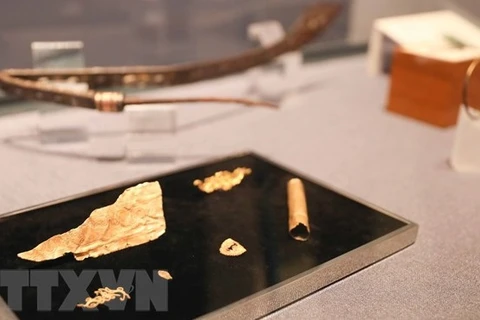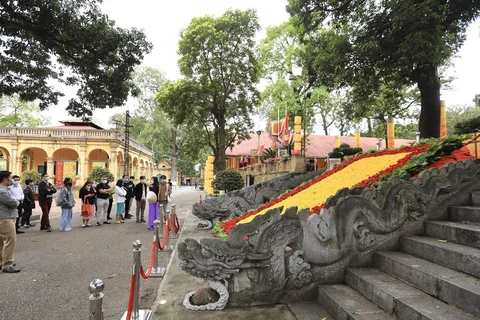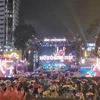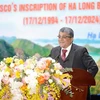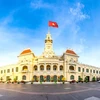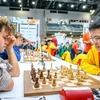Hanoi (VNA) – Standing in the middle of an excavation hole in the Thang Long Imperial Citadel (Hanoi), Associate Professor-Doctor Tong Trung Tin, chairman of the Vietnam Archaelogy Association, excitedly talked about the new and valuable findings that he and his colleagues have just unearthed.
The discovery of important archaeological vestiges at the relic site also came with a noble mission, which is to seek ways to preserve the relic site for future generations.
In an interview granted to the VietnamPlus on the occasion of the Vietnam Heritage Day (November 23), the expert said the excavation work had been delayed for some time due to the COVID-19 pandemic. After the pandemic was controlled, his group had sped up the work.
According to Tin, the Thang Long - Hanoi Heritage Conservation Centre in coordination with the Institute of Archaeology has conducted excavations on an 8,440 sq.m area in the central part area of the relic since 2011. The excavations have produced new evidence, contributing to the research and restoration of the Kinh Thien main palace. He added that the Hanoi authorities have always facilitated the excavation and research work.
Difficulties in the excavation process included construction works on the surface that need to be preserved, and the strong underground water sources.
For the first time, archaeologists found traces of a royal road believed to date back to the Le So (Early Le) dynasty. The road was paved with big-size red square tiles running across the Dan Tri courtyard.
They also discovered vestiges of a big wall running from East to West, which could surround a rather large area with important architectural structure. There were many sewers running under the wall and joining the main sewer. It is interesting that the sewers are paved with stone labs with two square holes, which archaeologists think they might be used to install iron bars to prevent those with bad intention to sneak into the palace.
There was also an intact column base in the shape of a 16-petal lotus, which archaeologists thought might be a column in the corner.
According to the Assoc. Prof., the newly-found royal road showed that the Dan Tri courtyard might not be as simple as earlier thought. He expects that more interesting things about the courtyard and the 35,000 sq.m Central Section of the Thang Long Imperial Citadel are waiting to be discovered.
Tin noted that most of the scales and architectures of Ly dynasty structures remain a mystery. The ground and structures of the Tran dynasty are even more so. “However, the more we excavate, the clearer the picture of the Forbidden City becomes,” he said.
The latest excavations in 2022 have revealed many new findings, helping researchers gain more understanding about the Central Section of the imperial citadel relic, Tin said, adding that they are also very helpful for the restoration of the space of Kinh Thien Palace.
Regarding the conservation of relics, the archaeologist said education is needed to enhance the public’s awareness about relics’ values. He also thought tourism products should be developed in connection with relics to promote them.
Excavation at the ancient Thang Long Citadel has been going on for 20 years, which has revealed many architectural vestiges of palaces and countless artefacts. They have allowed scientists to have a clearer vision about the architecture of Kinh Thien Palace and the palace’s space. However, the restoration of the space of Kinh Thien Palace is obstructed by the building of the Defence Ministry’s Operation Department. The Thang Long – Ha Noi Heritage Conservation Centre and scientists are coordinating to seek the most appropriate solution to the problem.
The Imperial Citadel of Thang Long is a complex of historic imperial buildings located in the centre of Hanoi, Vietnam. It was first constructed in 1011 under the reign of King Ly Thai To of the Ly dynasty. Situated in the heart of Hanoi, the Central Sector of the Imperial Citadel of Thang Long is an outstanding place of interest not only for the capital city but also for the country as a whole. The site is one of the ten special national heritage sites proclaimed by the Prime Minister in 2009 and was inscribed on the World Heritage List by UNESCO’s World Heritage Committee in 2010. Its Outstanding Universal Values are reflected in its historical longevity, its continuous role as a seat of power, and its multiple cultural layers./.






